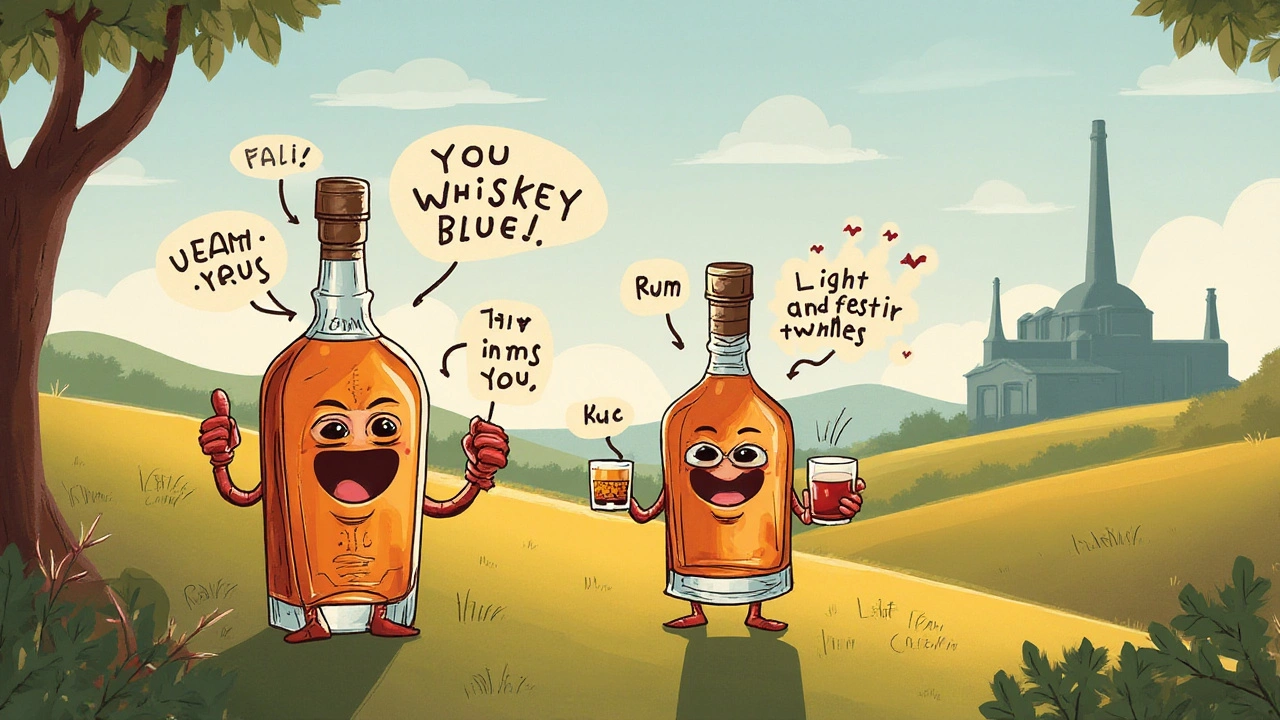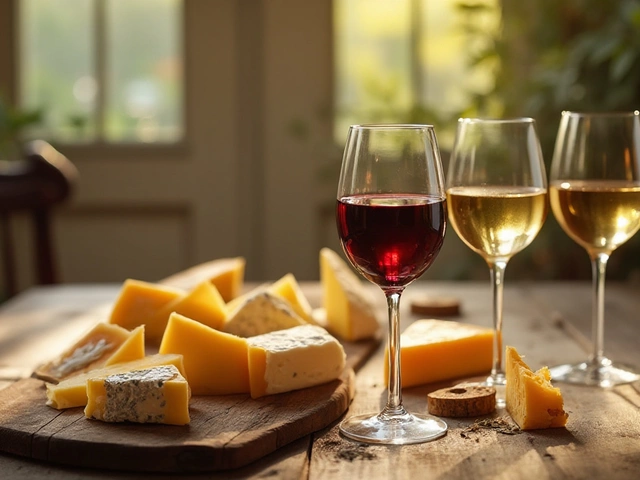Trying alcohol for the first time can be a rite of passage into cultural and culinary exploration. The vast world of spirits offers an array of flavors and experiences that can be both exciting and a little daunting. Choosing the right spirit to start with can set the tone for your entire discovery journey, so it’s worth delving into what each type offers.
Think about your palate—do you lean towards sweet and smooth, or are you adventurous, eager to dive into complex flavors? Whether it's the caramel notes of whiskey or the botanical burst of a gin, there's something for everyone. This guide gently leads you through the best spirits to try first, with practical tips and intriguing insights to ease your way into the fascinating world of alcoholic beverages.
Understanding Your Palate
Diving into the world of excellent spirits is akin to embarking on a culinary journey; it begins with understanding your own tastes and preferences. Your palate plays an essential role in determining which best alcohol might appeal to you first. This isn't just about whether you prefer sweet to savory; it's about discovering layers of flavor that resonate with your senses. It's about identifying subtle notes that tell a story unique to each spirit. For instance, if you’re someone who enjoys rich, complex flavors, you might be drawn to the toasty vanilla notes of a fine bourbon. Conversely, those who find joy in fresh, crisp tastes might find a gentle introduction in a light, floral gin.
One approach to acquainting yourself with your palate is by experimenting with foods known for their diverse taste profiles. Try pairing different foods with various spirits to see how they interact. As you sample, think about how each food or drink makes you feel and what flavors are most prominent to you. A diary or a simple list can be handy to jot down these impressions. Doing this not only sharpens your ability to articulate flavors but deepens your appreciation for the subtle complexities that each spirit offers. Interestingly, studies have shown that consumers who engage in regular tasting sessions often find new, surprising preferences by noting recurring flavors they enjoy across different drinks.
As renowned sommelier Andrea Robinson articulates, "The key to unlocking your palate lies not just in tasting, but in tasting with intention."
"Pay attention to what you enjoy in a non-alcoholic context and let that guide you," she suggests, adding a layer of mindfulness to an already rewarding experience. With time, you might discover that you appreciate smoky accents in a Scotch or perhaps you are more inclined to the honeyed undertones of certain rums.It can be useful to pay attention to regional preferences as well and see if they align with your own taste. For example, does the crisp, refreshing nature of vodka align more with your diving into lighter experiences, or does the rich, satisfying nature of a robust Irish whiskey call to you?
The beauty of spirits is that it caters to an incredibly wide range of tastes and experiences, letting novices explore a rich tapestry of flavors and stories. While it might take time to fully grasp what your preferences are, the journey of discovery is often just as rewarding as the destination itself. Don't hesitate to ask for recommendations from friends, bartenders, or spirit enthusiasts who can offer insights tailored to your tastes. Sampling different spirits with curious intent can not only enlighten your first drink experience but also transform you into a connoisseur over time. Dive deep, slowly but surely, and let your palate navigate this fascinating exploration.
Whiskey Wonders
When it comes to exploring the world of best alcohol for the first time, whiskey stands out with its rich history and diverse flavor profiles. Originating from places like Scotland, Ireland, America, and Canada, each region has developed its distinct style over the centuries. Scottish whisky, commonly known as Scotch, is usually smoky due to the malted barley being dried over peat fires. In contrast, Irish whiskey is generally smoother and triple-distilled, making it a more accessible choice for beginners. In America, the sweet and robust caramelly notes of Bourbon whiskey are enticing, thanks to the corn-heavy mash bill and aging in charred oak barrels. Canadian whisky, often labeled 'rye', is known for its light and smooth blend, making it another excellent introduction to whiskey for novices.
Scotch or bourbon might be your entrance into the world of whiskey tasting. The experience is as much about savoring the flavors as understanding the intricate craft behind each bottle. Take time to enjoy every sip, feeling the texture and tasting the depth of flavors. Even if you're not initially intrigued by whiskey, you might find yourself growing fond of its evolving taste profile as it unfolds on your palate. Remember, the complexity is what many enthusiasts relish, and starting your journey with an open mind can lead to an appreciation for those subtle details.
"Too much of anything is bad, but too much of good whiskey is barely enough." – Mark Twain
For those looking to explore specific brands, beginners might find pleasure in tasting names like Jameson for its light, crisp quality, or Glenfiddich and Glenlivet for a more quintessential Scotch introduction. If you prefer the sweeter end of the spectrum, indulging in a Maker's Mark or even a Buffalo Trace might just hit the spot. Remember, adding a splash of water or an ice cube can help mellow the spirit's intensity without losing its character, allowing you to savor the gentle dance of flavors on your palate. The more you engage with whiskey, tasting different labels from Irish to American varieties, the more nuanced your understanding and enjoyment will become.
Finding the best alcohol for your first whiskey experience can also involve tapping into the collective wisdom of experts. Guides and tastings offer you a chance to taste without committing to a full bottle, and engaging with others can enhance the joy of your discovery. As you learn what appeals most to your taste—whether it's the smokiness, sweetness, or perhaps the spicy rye kick—you'll build confidence in your choices and maybe even start crafting your own tasting notes. This journey might ignite a passion for whiskey that lasts a lifetime.
| Type | Region | Flavor Profile |
|---|---|---|
| Bourbon | USA | Sweet, caramel, and oak |
| Scotch | Scotland | Smoky, peaty, and rich |
| Irish | Ireland | Smooth and light |
| Rye | Canada/USA | Spicy and dry |

Rum Revelations
Exploring the world of rum is like taking a journey through history and tropical paradise. Originating from sugarcane byproducts like molasses or directly from sugarcane juice, rum is steeped in rich historical tapestry, having been an integral part of maritime lore and colonial trade routes. This spirit, with its roots in the Caribbean, has evolved far beyond its tropical isle beginnings. Today, you can find a wide range of rums that vary in flavor, color, and production techniques, reflecting their cultural origins and the people behind them.
Rum offers a spectrum of taste experiences, making it an excellent choice for those new to spirits. From the light and crisp notes of a white rum to the deep, spiced, and caramel flavors of a dark rum, there's something to suit every palate. Some rums are aged in barrels to develop complexity, while others are spiced or flavored for added intrigue. Trying rum for the first time, consider starting with a well-known brand that assures quality and consistency. Brands like Bacardi or Captain Morgan have solidified their reputation worldwide and provide a stable introduction to the spirit.
When savoring rum, appreciate its versatility. It's not just excellent neat or on the rocks; rum is a foundational ingredient in many classic cocktails. The Mojito's refreshing mint blend or the delightful mix of spices in a Dark 'n' Stormy showcase rum's ability to shine in various environments. This flexibility is part of what makes rum such an attractive option for newcomers.
"Rum is not just a spirit, it’s a passport to the Caribbean." - UnknownRum’s diverse offerings can sometimes be confusing, so having a basic understanding of its types can be helpful. All rum is made through a process of fermentation and distillation, but from there, it can diverge into different categories: white rum, gold rum, dark rum, and spiced rum are among the most well-known. Each has its own typical use: white for cocktails, gold often sipped neat, dark enjoyed in both ways, and spiced rum when you want an extra burst of flavor.
For those looking to delve deeper into the intricacies of rum, take note of the aging process, which plays a crucial role in developing flavors. Aged rums are often more complex, offering richer, woodier undertones picked up from their time spent in oak barrels. In fact, aging can transform rum into something akin to fine whiskey, with layers of flavors to be savored slowly. When tasting, use the right glass and technique, pairing with foods that complement its bouquet for a full sensory experience. For the adventurous palate, discovering small-batch or artisanal rums provides yet another dimension to your tasting journey.
Vodka Ventures
Vodka, often hailed as the most versatile of all spirits, lays down a smooth path for those embarking on their alcohol journey. With roots tracing back to Eastern Europe, especially Russia and Poland, this clear spirit has made a significant mark around the globe. The interesting fact about vodka is its wide-ranging flexibility; it can be distilled from almost anything—grains, potatoes, even fruits. This diversity in origin contributes to the subtle nuances in flavor profiles that vodka offers. For someone new to spirits, starting with vodka can offer a clean slate, allowing one to appreciate the nuances without being overpowered by intense flavors.
The simple and neutral taste is precisely why vodka is a staple in countless cocktails. It doesn’t overshadow the other components but rather complements them, letting you experience the blend of flavors in a new light. Considered as a 'blank canvas', vodka allows bartenders their creative freedoms, thus becoming an essential player in drinks ranging from the classic martini to contemporary concoctions. As you sip on a well-crafted vodka tonic, for instance, you'll notice how effortlessly the botanicals of the tonic come alive, framing the crispness of the vodka in an elegant display of taste that beckons appreciation from novice drinkers.
"Vodka is a liquid chameleon," reflects renowned mixologist Dale DeGroff, emphasizing its adaptable nature that appeals to both purists and mixologists alike.
A fun journey with vodka doesn’t just stop at cocktails. It’s one of the few spirits that also encourages a tasting in its pure form, or 'neat', as they say. This is particularly popular in its native countries, where sipping chilled vodka straight from the freezer is a tradition steeped in social gatherings and celebratory moments. Taking a sip neat allows you to savor its purity, appreciating the meticulous process of distillation that results in its smooth quality. Some brands have become iconic in representing this purity, often boasting multiple distillations to achieve their hallmark smoothness. With vodka, you'll find yourself enjoying both the dynamic cocktails it crafts and the simplicity of its solitary, chilled presence, marking it a delightful initiation spirit.
- For starters, try brands like Absolut, known for its balance and accessibility.
- Consider exploring Grey Goose for a premium experience; its French origins give it a unique edge.
- Those interested in deeper undertones might turn to Chopin, a Polish vodka distilled from potatoes that embraces a slightly creamy texture.
With vodka's approachable nature and extensive array of serving options, it doesn't just punctuate a beginning—it sets a promising tone for all that follows in your alcohol exploration. It's no wonder that vodka has carved a niche as a favorite starting drink across diverse palates worldwide.

Gin and its Botanicals
Gin, a spirit that dates back to the early 17th century, carries a fascinating intertwining of tradition and innovation. Often characterized by its distinct juniper berry taste, gin is a canvas painted with an assortment of botanicals. The curious aspect of this spirit is that while it must legally have a predominant flavor of juniper, the supporting cast of ingredients can vary wildly—lavender, coriander, angelica root, and citrus peels are just a few that can contribute to a gin's unique profile. This flexibility allows gin to boast a remarkable diversity, making it an exciting choice for newcomers to the world of spirits.
Traditional gin processes involve the distillation of these botanicals alongside an alcohol base, which might contrast with more modern methods that infuse flavors after distillation. This gives gin the potential to exhibit notes ranging from floral to spicy, and allows each brand to express creativity. Tasting gin is about more than just flavor—it's an exploration of scent as well. A well-poured glass can evoke the memory of a botanical garden or a citrus orchard, engaging both the palate and the nose. Such qualities make gin particularly appealing for those with curious taste buds.
When selecting a gin to try as your first, consider the classic London Dry Gin, which offers a crisp, balanced introduction to the spirit. Meanwhile, contemporary gins such as Hendrick's bring intriguing layers of cucumber and rose petals. Beginner spirits enthusiasts might find that these modern renditions offer a softer introduction to the botanical possibilities gin presents. Whether you prefer a classic gin and tonic or are ready to venture into creative cocktails, gin's versatility means there is a style suitable for every beginner.
"Gin has the creative liberty that not many spirits can boast of; each bottle tells its own story through its blend of botanicals," remarked Simon Ford, a well-regarded mixologist.
Appreciating gin goes beyond its taste. The history of gin is dotted with fascinating tales, from its medicinal beginnings in Holland to the infamous 'Gin Craze' in 18th century England. For the curious connoisseur, knowing the cultural backdrop of a drink can enrich the tasting experience, adding layers of context to each sip. Did you know that gin was once hawked as a herbal medicine before it gained popularity as a staple in the drinking repertoire of many?


